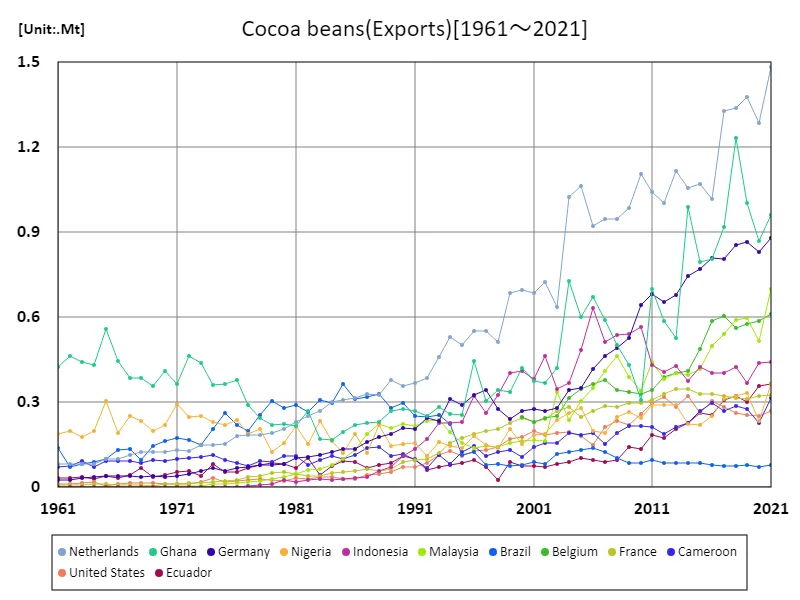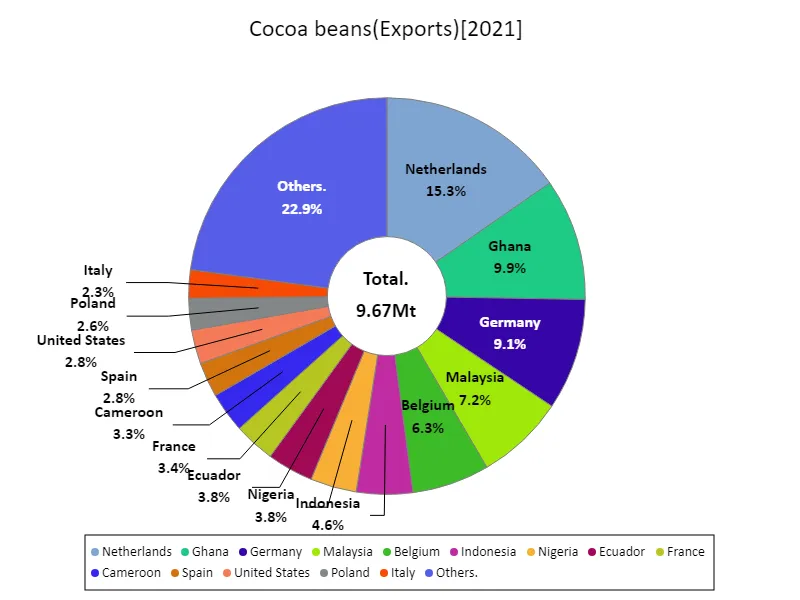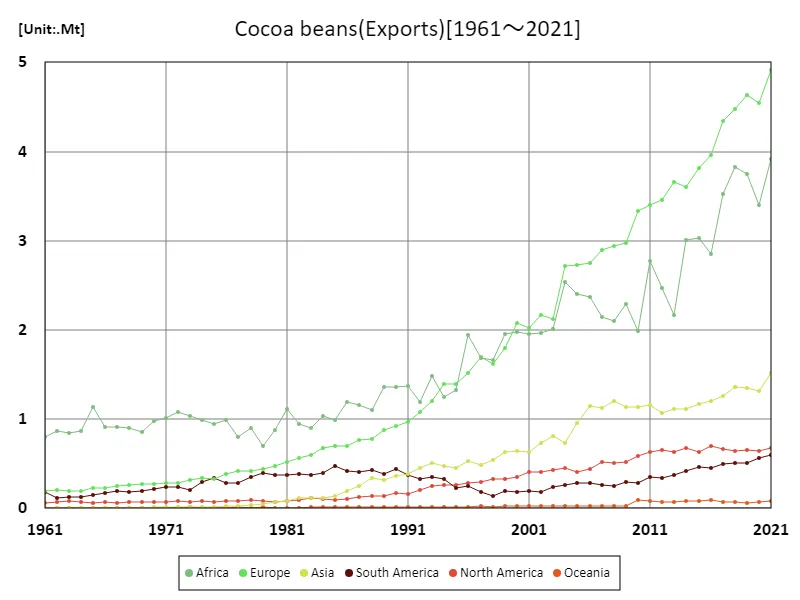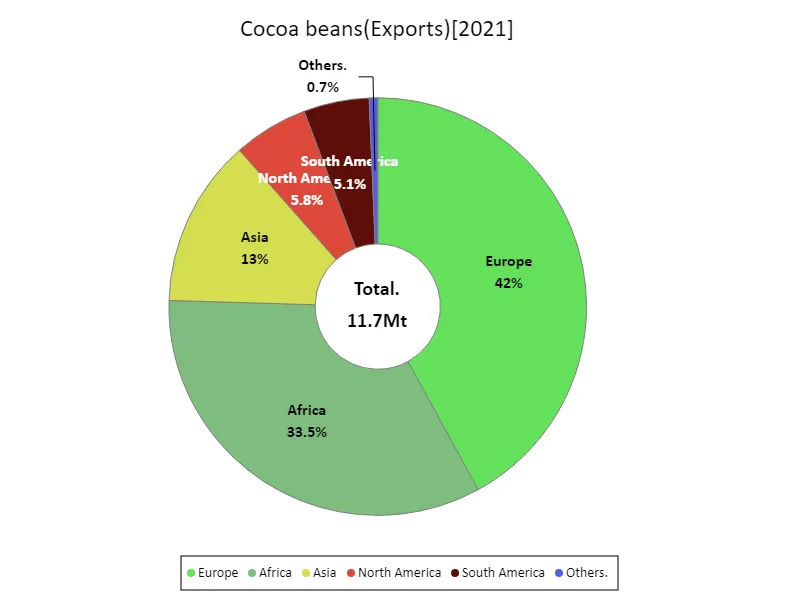Abstract
Côte d’Ivoire has long been the global leader in cocoa bean production, with a robust agricultural sector driven by favorable climate, rich soil, and a strong reliance on smallholder farmers. In 2021, it produced 2.07 million tons, maintaining its dominance in global cocoa exports. Historically, the country has experienced steady growth in cocoa output, despite challenges like fluctuating global prices, deforestation, and child labor concerns. The sector is characterized by its dependence on international markets, making it vulnerable to shifts in demand, and efforts are underway to promote sustainable practices and improve farmer incomes to ensure long-term viability.
Cocoa bean exports (worldwide)
From 1961 to 2021, global cocoa bean production has shown consistent growth, driven by rising demand for chocolate and cocoa-based products. Côte d’Ivoire emerged as the top producer, achieving its peak in 2021 with 2.07 million tons, marking 100% of its maximum capacity. Its dominance stems from optimal growing conditions, government support, and a large network of smallholder farmers. Production trends highlight significant expansion in the 1980s due to increased cultivation and improved practices. However, the industry faces challenges like price volatility, deforestation, and sustainability concerns, prompting initiatives to balance growth with environmental and social responsibilities.


The maximum is the latest one, 1.48Mt of Netherlands
Cocoa bean exports (latest year, countries around the world)
In 2021, global cocoa bean exports totaled 11.7 million tons, with Côte d’Ivoire leading at 2.07 million tons, far surpassing the global average of 66.3 thousand tons per exporter. This highlights the concentration of production in a few key regions, notably West Africa, which dominates the market. Côte d’Ivoire’s success stems from its favorable climate, extensive smallholder networks, and established supply chains. Global trends show rising production fueled by growing demand for chocolate, but challenges like price volatility, environmental impacts, and labor issues persist. Efforts are underway to promote sustainability and equitable benefits for producers.


The maximum is 1.48Mt of Netherlands, the average is 55.3kt, and the total is 9.67Mt
Cocoa bean exports (continent)
In 2021, Europe led in cocoa bean export volume with 4.92 million tons, reflecting its role as a global processing and trade hub rather than a primary producer. Europe imports raw cocoa beans, primarily from West Africa, and re-exports processed products like cocoa liquor, butter, and powder, driven by its advanced processing facilities and strong demand in global markets. This highlights a trend of value addition within developed regions, contrasting with raw commodity exports from producing countries. The global cocoa trade has grown steadily, shaped by rising chocolate consumption, but faces challenges like sustainability, fair trade, and climate change impacts on supply chains.


The maximum is the latest one, 4.92Mt of Europe
Cocoa bean exports (latest year, continent)
In 2021, global cocoa bean exports reached 11.7 million tons, with Europe leading at 4.92 million tons, well above the average of 1.95 million tons. Europe’s dominance stems from its role as a major processing and trading center, importing raw beans from producers like Côte d’Ivoire and exporting refined products. The global cocoa trade has seen steady growth, driven by rising chocolate demand. However, the industry faces challenges, including price fluctuations, environmental impacts, and equitable value distribution between producing and processing nations. Sustainability efforts and traceability are key trends shaping the future of cocoa agriculture.


The maximum is 4.92Mt of Europe, the average is 1.95Mt, and the total is 11.7Mt



Comments